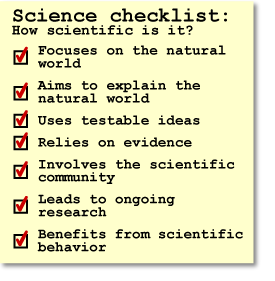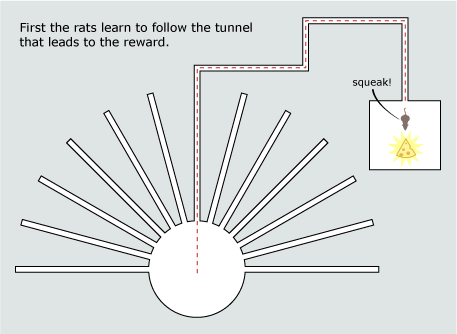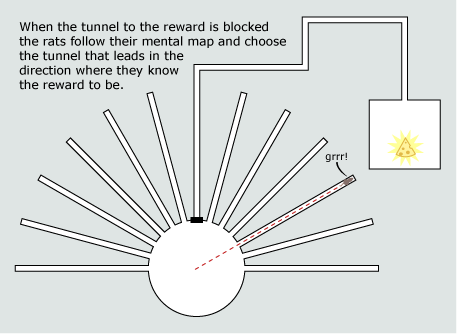 We’ve seen that scientific research generally meets a set of key characteristics: it focuses on improving our understanding of the natural world, works with testable ideas that can be verified with evidence, relies on the scientific community, inspires ongoing research, and is performed by people who behave scientifically. While not all scientific investigations line up perfectly with the Science Checklist, science, as an endeavor, strives to embody these features. Ernest Rutherford’s discovery of the atomic nucleus, for example, satisfied those characteristics quite neatly. But how would a less familiar scientific investigation — one that wouldn’t show up in a high school science textbook — measure up against the Science Checklist? To find out, we’ll look at an example from the field of psychology…
We’ve seen that scientific research generally meets a set of key characteristics: it focuses on improving our understanding of the natural world, works with testable ideas that can be verified with evidence, relies on the scientific community, inspires ongoing research, and is performed by people who behave scientifically. While not all scientific investigations line up perfectly with the Science Checklist, science, as an endeavor, strives to embody these features. Ernest Rutherford’s discovery of the atomic nucleus, for example, satisfied those characteristics quite neatly. But how would a less familiar scientific investigation — one that wouldn’t show up in a high school science textbook — measure up against the Science Checklist? To find out, we’ll look at an example from the field of psychology…
Beyond the prototype: Animal psychology
Most of us have probably wondered how other animals think and experience the world (e.g, is Fido really happy to see me or does he just want a treat?) — but can that curiosity be satisfied by science? After all, how could we ever test an idea about how another animal thinks? In the 1940s, psychologist Edward Tolman investigated a related question using the methods of science. He wanted to know how rats successfully navigate their surroundings — for example, a maze containing a hidden reward. Tolman suspected that rats would build mental maps of the maze as they investigated it, forming a mental picture of the layout of the maze. But many of his colleagues thought that rats would learn to navigate the maze through stimulus-response, associating particular cues with particular outcomes (e.g., taking this tunnel means I get a piece of cheese) without forming a general picture of how the whole maze looks.

Here’s how Tolman’s investigation measures up against our checklist:
- Natural world?
The brains of rats and their workings are a part of the natural world, as is the behavior of rats. - Aims to explain?
Tolman aimed to explain how rats navigate their surroundings. - Testable ideas?
The two ideas about how rats navigate (mental maps vs. stimulus-response) are testable, but figuring out how to test them required some clever and logical thinking about experimental design. To test these ideas, Tolman and his colleagues trained rats in a maze which offered them many different tunnels to enter first. One of the tunnels twisted and turned but consistently led to the reward, and the rats quickly learned to go down that tunnel. Then the experimenters blocked the entrance to the reward tunnel. What would the rats do? Tolman reasoned that if the rats were navigating with a mental map, they would pick another tunnel that, according to their mental map of the maze, led in the direction of the food. But if the rats were navigating via stimulus-response, Tolman reasoned that they would choose the tunnel closest to the original reward tunnel, regardless of where it led, since that was closest to the stimulus with the pay-off.
- Relies on evidence?
Tolman and his colleagues tested the mental map idea with several experiments, including the tunnel experiment described above. In that experiment, they found that most of the rats picked a tunnel that led in the direction of the food, instead of one close to the original reward tunnel. The evidence supported the idea that rats navigate using something like a mental map.
- Scientific community?
Tolman published many papers on this topic in scientific journals in order to explain his experiments and the evidence relevant to them to other psychologists. - Ongoing research?
This research is a small part of a much larger body of ongoing psychological research about how organisms learn and make decisions based on their representations of the world. - Scientific behavior?
Edward Tolman and his colleagues acted with scientific integrity and behaved in ways that push science forward. They accurately reported their results and allowed others to test their ideas.
So is it science? Though it might not be the example that comes to mind first when someone says “science experiment,” this psychological research is very much within the realm of science.
Take a sidetrip
To find out more about less familiar examples of science and see how they match up to the Science Checklist, explore these side trips:
Want to see how investigations in biology, chemistry, and space and earth science measure up against the Science Checklist? Visit these side trips:
To see how a less-than-ideal scientific investigation measures up against the Science Checklist, visit The science checklist applied: Cold fusion.
